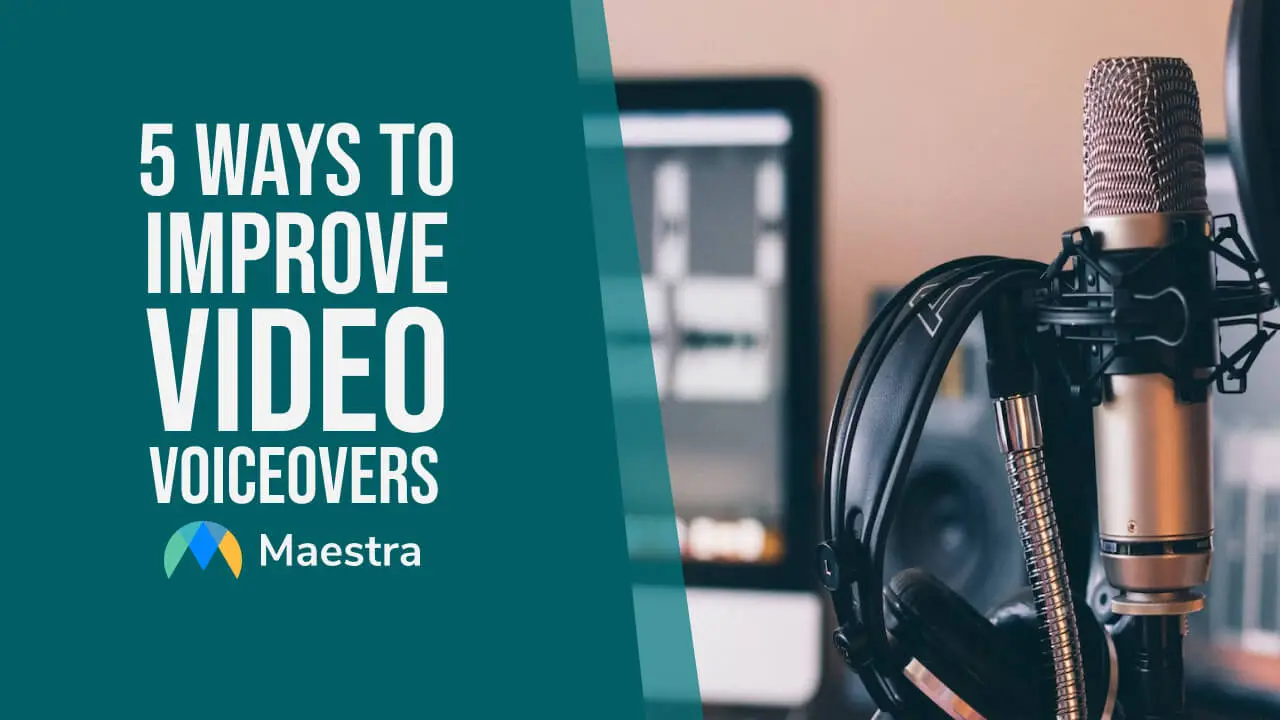5 Ways to Improve Video Voiceovers

Write a Script
First things first, it’s always best to have a plan before recording voice over sound. A script functions as the roadmap for any video or audio recordings, but it’s especially important in voiceovers. A voiceover is audio added on top of a video to elaborate on what the viewer is seeing. In other words, it explains what your audience is looking at. Scripts become critical because voiceovers must align with what the audience sees. If your video is about national park wildlife, you can’t just turn on the microphone and ramble about fish for three minutes while video clips of various animals play out. You have to plan out a narrative for three minutes, and then you’ll be able to inform your readers about what they see while they see it. Writing a script also allows you to practice read-throughs, which lets you test out that voiceover timing at the writing desk before you start spending time and money on recording. In addition, reading a script aloud helps you to refine your word choice. If there’s an accidental rhyme or an awkward phrase, you can fix it in practice rather than doing live rewrites while recording.Limit Background Noise
Having as little background noise as possible while recording helps the sound to come across clear and unmuddied. This is especially important when the voiceover is not the only audio playing. For example, if you were voicing over a short video of a babbling brook, there might be two audio tracks playing concurrently in your video editor: the water noises accompanying the video, and the voiceover sound. These sound effects and background sounds helps a reader to become immersed in the video. If there’s a third noise, like a roommate faintly calling ‘I’m home!’ in the background, then the reader will be pulled out of the video’s authenticity and distracted. If you can’t record in a professional studio, make sure that you record in a quiet space uninterrupted, like a bedroom or even a closet. If you do get interrupted, it’s always better to pause and restart the part that was interrupted. With recording software and an online video editor, you can combine audio recordings seamlessly. Noise-canceling equipment that’s designed to block out external noises is also an option.Use an External Microphone
If you’re ready to move beyond your laptop or cell phone microphone and toward a higher-quality sound, then it might be time to invest in an external microphone. There are a variety of microphones available, so it’s important to look into what type of voiceover microphone would best serve your needs. A condenser microphone would be the way to go if your voiceover recording usually takes place in a quiet environment. However, if you’re recording audio at a noisy event, like a concert, a dynamic microphone would cut out a lot of the background noise. A few microphone options that come recommended by voice actors and professional voice talent are:- The Rode NT1A: This microphone is an affordable option that produces quality sound, which makes it a good choice for beginners.
- The Shure SMB7: This microphone is recommended for podcast and audiobook-style narration. This would suit your needs if your video voiceovers were in the style of longer narrations instead of quick audio sound bites.
- The Audio-Technica AT2020 USB: This microphone is also recommended for beginners, and is durable enough to travel well. If you plan on recording in a variety of locations, transport is a key factor to consider.
